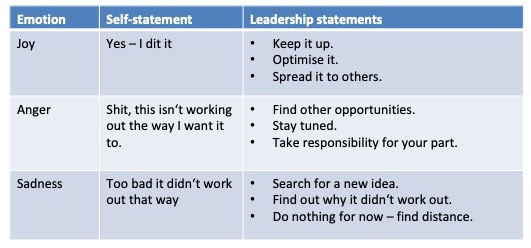In connection with change, there is often talk of fear and resistance. Frank Wippermann describes why this is so and what should (also) be addressed instead in the following blog post.
Please check the following five arithmetic problems and then summarise:
15 + 7 = 22; 6 x 7 = 42; 24 : 8 = 3; 37 – 9 = 29; 27 – 11 = 16
Nine out of ten of you (at least!) will have thought: “Ey, a mistake!”. Only a very few will have thought first: “Great, four tasks solved correctly.” This minority group is likely to include, as a rule (and hopefully), teachers at primary schools. For them, it is important to strengthen the self-esteem and motivation of the children sitting in front of them through positive feedback – four correct answers. Most others have lost this attitude of emphasising the positive at some point in their socialisation. Okay, some may never have had it …
The top: fear and resistance
Let’s take a look at books, workshop agendas or change training courses. It is very likely that there will be a point called “Dealing with fears” or “Resistance in change processes”. Implicitly, this is primarily about the fear and resistance of others, preferably subordinate employees. After all, the aim is to take away their fear and reduce their resistance. And only rarely is one’s own fear as a leader and one’s own resistance to change addressed. Well, from a leadership point of view it is also easier when the problem is not with myself but with the other person. Then it is simply easier to lead…
Fear is one of many emotions. And it is initially incomprehensible why this emotion in particular is pushed to the forefront of change (with its partner, resistance). Except: we are so wired that we tend to overlook positive things and emphasise mistakes … see above. It helps to broaden one’s own perspectives. By the way, broadening perspectives is one of the leadership competences that will become increasingly relevant in the future.
Five Emotions
Philip N. Johnson-Laird, one of the leading psychologists of thought of our time, together with Keith Oatley determined the following five basic emotions in the late 1980s:
- Sadness – about missing (or not being able to reach) a goal.
- Joy – over the achievement of a goal
- Anger – at the frustration of pursuing a goal.
- Disgust – at the violation of a taste goal
- Fear – of the threat to a goal of self-preservation
I did not choose the order at random. While the first two emotions occur ex post, anger occurs during action. And the latter two emotions are more internalised, they concern the aesthetics and self-concept of each individual. For outsiders – as long as they are not psychologically trained – dealing with them is likely to be more difficult than with the first three.
jas-leadership: Dealing with joy – anger – sadness
So let’s make it easier for ourselves as leaders (of whomever: the employees, the children, the mask-refuser at the supermarket checkout): let’s be much more active in addressing the three emotions that are goal-related. That is finally a different interpretation of ‘management by objectives’.
Let go of ‘fear/resistance’ for a while, focus your leadership actions on the three emotions that you can influence more directly. This should also bring joy to you.
picture: pixabay, Alexas_Fotos
https://pixabay.com/de/photos/emotionen-gef%C3%BChle-smilies-freude-4846021 (2021-04-01)




